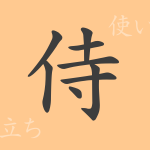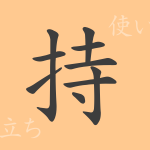Each kanji character is like a mirror reflecting the culture and history of its country. The common Japanese kanji “治(ち)” has greatly influenced Japanese life and thought throughout its deep history. In this article, we will delve into the origins and modern usage of “治(ち)”, exploring its fascinating aspects in detail.
Origins of 治 (Etymology)
The kanji “治(ち)” originates from ancient China. It consists of the water radical “氵(さんずい)” and the component “台(だい)” which means to correct or govern. This combination suggests the idea of controlling and regulating the flow of water, symbolizing governance and order. Historically, “治(ち)” has played a crucial role in East Asian cultures, representing stability and order.
Meanings and Usage of 治
The kanji “治(ち)” encompasses meanings such as “govern,” “heal,” and “restore.” These meanings share a common concept of leading things to a correct state. In specific usage, “治(ち)” appears in contexts like politics “政治(せいじ),” and medical treatment “治療(ちりょう),” demonstrating its versatility in different fields.
Readings, Stroke Count, and Radical of 治
The kanji “治(ち)” has various readings in Japanese:
- Readings: On’yomi (音読み) are “チ” and “ジ”; Kun’yomi (訓読み) include “おさ.める (osa.meru),” “おさ.まる (osa.maru),” “なお.る (nao.ru),” and “なお.す (nao.su)”
- Stroke count: It has 8 strokes in total.
- Radical: The radical is “氵(さんずい),” representing water.
Idioms, Phrases, and Proverbs Using 治
There are numerous idioms, phrases, and proverbs that include “治(ち),” showcasing the richness of the Japanese language:
- 政治(せいじ): Governance or the methods and techniques of ruling a country or region.
- 治安(ちあん): Public order and safety.
- 治療(ちりょう): The act of healing or treating a disease or injury.
- 安治(あんじ): A state of being stable and calm.
- 水治(すいち): The prevention of water damage or river management.
The proverb “治めるに憲法あり” (おさめるにけんぽうあり) means that governing a country requires laws.
Conclusion on 治
The kanji “治(ち)” is a significant character representing concepts of order, stability, and healing. Its various readings and usages make it an indispensable part of the Japanese language. As seen in numerous idioms and proverbs, “治(ち)” is deeply rooted in Japanese life and culture. Understanding its meanings is highly beneficial for deepening one’s comprehension of the Japanese language.

























